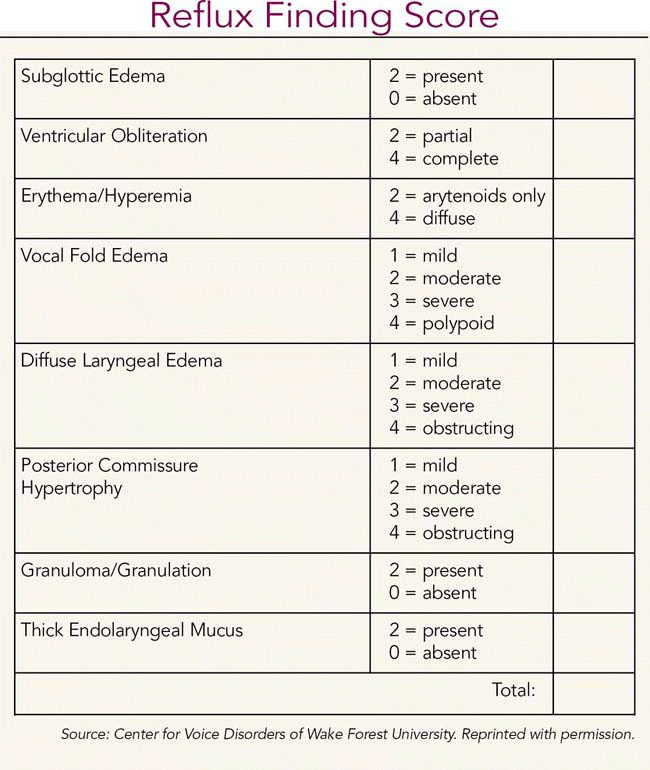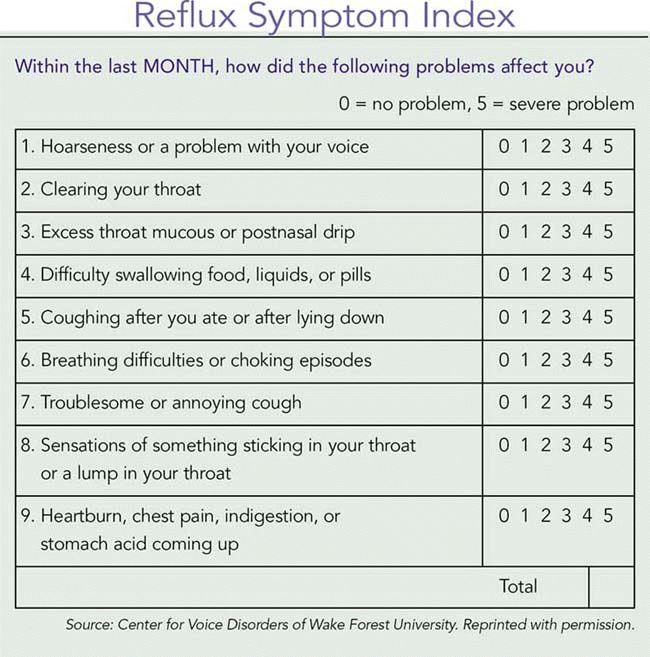CHICAGO-Laryngopharyngeal reflux (LPR) is considered one of the most complex and difficult-to-diagnose manifestations of gastroesophageal reflux disease (GERD). Although it has been estimated that LPR is present in up to 50% of patients with voice disorders, there have been no validated instruments for quantifying the physical symptoms and severity of LPR.
Explore This Issue
August 2006Much effort has been spent over the past few years in developing such instruments, said Tamer A. Mesallam, MD, MSc, of the Cincinnati Children’s Hospital Medical Center (Ohio). Two instruments-Reflux Finding Score (RFS) and Reflux Symptom Index (RSI)-are commonly used as assessment tools in diagnosing and treating LPR.
Dr. Mesallam presented a paper comparing these two measurement tools at a session hosted by the American Broncho-Esophageal Association (ABEA) here at the Combined Otolaryngology Spring Meetings (COSM).
Quantifying LPR
The most commonly recognized signs and symptoms of LPR include hoarseness, vocal fatigue, excessive throat clearing, globus pharyngeus, chronic cough, postnasal drip, and dysphagia. Treatment options available to LPR patients include diet and behavior modification, antacids, H2-receptor antagonists, proton-pump inhibitors, and fundoplication surgery. Determining the appropriateness of these potential therapies, however, is dependent on the physician’s ability to accurately quantify the associated treatment outcomes.
RFS is an eight-item index designed to assess clinical severity based on laryngoscopic findings. Scores range from 0 (normal) to 26 (most severe), with a score of 11 or above generally considered to be indicative of LPR. The eight items included in the scale are subglottic edema, ventricular obliteration, erythema/hyperemia, vocal fold edema, diffuse laryngeal edema, posterior commissure hypertrophy, granuloma/granulation tissue, and excessive endolaryngeal mucus (see Reflux Finding Score, left).
The RSI is a nine-item self-administered outcome questionnaire designed to document LPR symptoms and severity. Patients are asked to rate how nine problems have affected them over the past month on a scale of 0 (no problem) to 5 (severe problem), with a maximum total score of 45. A total score of more than 13 is considered positive as far as diagnosis of LPR (see Reflux Symptom Index, above).
While both RFS and RSI have been shown to be effective, the correlation between these two instruments has not been much studied, said Dr. Mesallam. The objective of our study was to determine the relation between RSI and RFS regarding total score.
Study Protocols
Forty randomly selected patients-14 males and 26 females between the ages of 17 and 60-were included in the study. A retrospective chart review was performed for those patients fitting the inclusion criteria to choose those with RSI suggestive of LPR. For RFS, the video stroboscopic samples for the study group were reviewed and rated by six experienced raters on two different occasions to evaluate inter- and intra-rater reliability. The RSI and RFS were statistically compared with regard to both the total scores and the individual parameters.


Leave a Reply